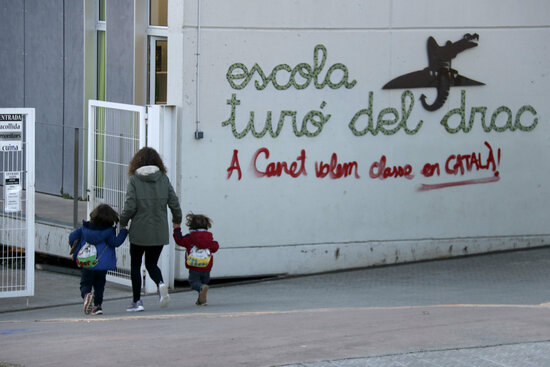Government says it is in charge of enforcing ruling increasing Spanish instruction in schools
Education department has until late March to modify language immersion system

The Catalan education department confirmed on Tuesday morning that it had been notified of the High Court ruling that 25% of classes in schools across Catalonia must be taught in Spanish and said it is its responsibility – and not that of school teachers or directors – to enforce it.
This comes just over two weeks after Catalonia's High Court reaffirmed a Supreme Court decision on the language of instruction in schools, meaning the government has until late March to modify the language immersion system.
In November, Spain's Supreme Court rejected an appeal that had been lodged by the Catalan education department, thereby upholding the High Court's initial ruling on the matter.
For the past 40 years, Catalan has been the main language used in classrooms in order to protect it as a minority language in Spain. This has become a contentious issue in recent years, with right-wing parties and groups such as Ciudadanos or the People's Party lobbying in favor of a higher presence of Spanish in obligatory education.
Whether Catalan authorities will indeed increase instruction in the Spanish language remains to be seen. On Monday, Catalan education minister Josep Gonzàlez-Cambray said a new policy framework would be created to "reaffirm" the Catalan school system but fell short of explicitly stating whether the ruling would be enforced or not.
If it has not been carried out in two months' time, either party or affected persons will be able to request enforcement measures.
Declining use of Catalan in schools
Recent figures released by the Catalan education department reveal that 47% of teachers always or almost always speak in Catalan to 4th-year secondary school students – that is significantly lower than 15 years ago, when 63% did.
This is especially remarkable as Catalan is the working language at schools in order to protect it and avoid splitting society into two separate linguistic communities.
When Catalonia recovered its self-rule in the late 1970s after 40 years of a fascist dictatorship, its new authorities decided that classes in Catalan, rather than a choice between Catalan and Spanish, would ensure that students end their studies speaking both languages – considering that the latter is learned in society because it is the most widely used one and is studied as a foreign language at school.